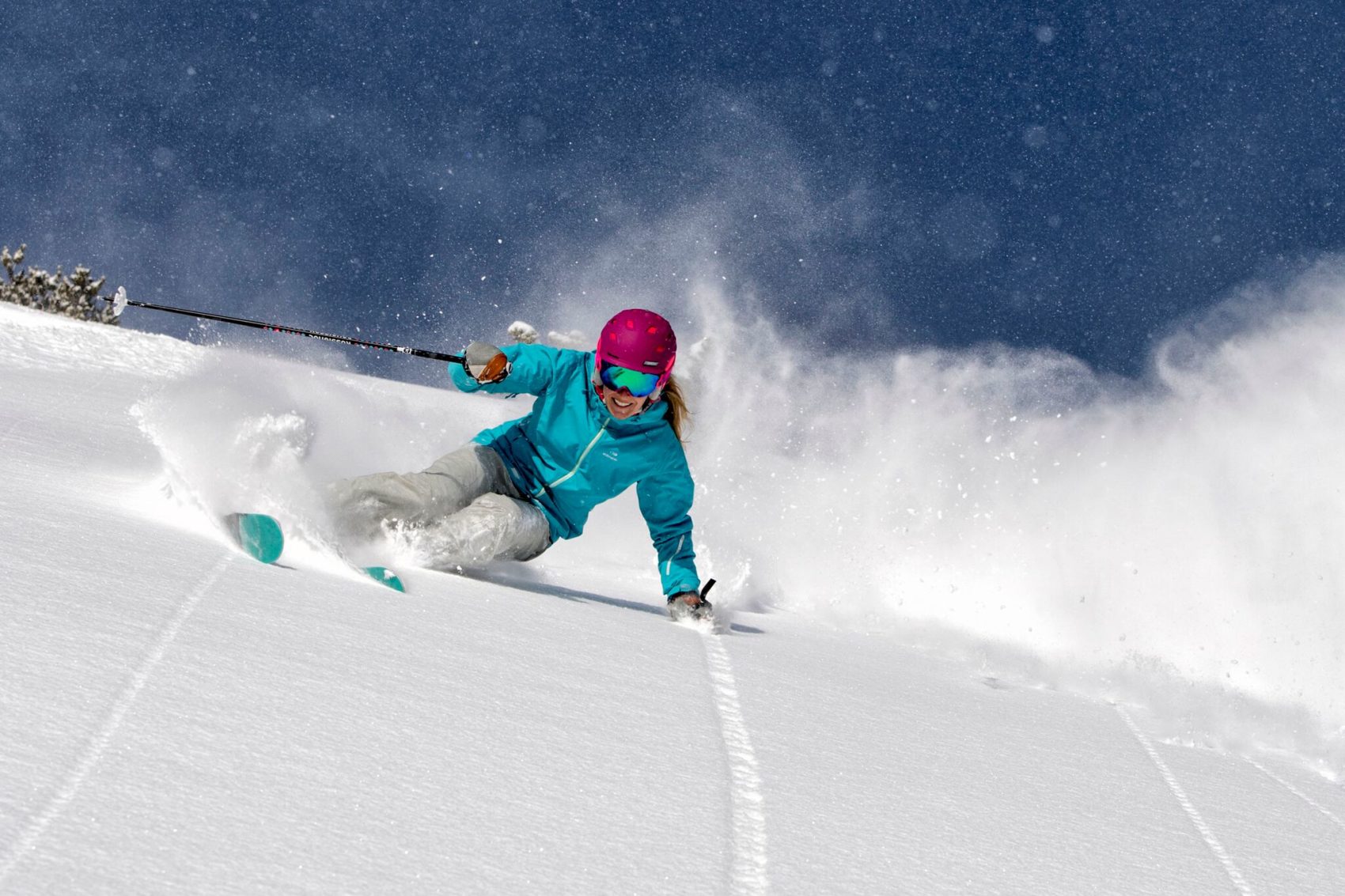
New data analysis has revealed which ski resorts are the snowiest in the Southern Hemisphere based on historical data trends. The latest findings shed light on the region’s top destinations for snow security and highlight which weeks of the season have historically been the snowiest.
The comprehensive study, conducted by a global ski season informational resource website, Snow Season Central, collected and analyzed historical snowfall records from the top 20 ski resorts across Australia, New Zealand, Argentina, and Chile. The analysis was based on industry-leading data from Snow Forecast, which looks at the mid-mountain snowfall patterns over the last 15 years of historical data between the 1st of June and the 30th of September.
Australia and New Zealand’s Top Resorts
Treble Cone, located near the popular ski resort town of Wanaka in the South Island of New Zealand, came out on top for overall snowfall, with an impressive 137″ (349 cm) between June and September. This is 134% higher than Perisher, Australia’s most popular resort, and 90% more than Coronet Peak, one of the two resorts near Queenstown, New Zealand.
Falls Creek, located in the state of Victoria, was Australia’s snowiest ski resort, with 78″ (199 cm) over the same period. The analysis showed most New Zealand resorts receive more snowfall than Australian ski resorts, and New South Wales resorts of Thredbo and Perisher received the least over the recorded period. In fact, Falls Creek receives 39% more snow than Thredbo historically.
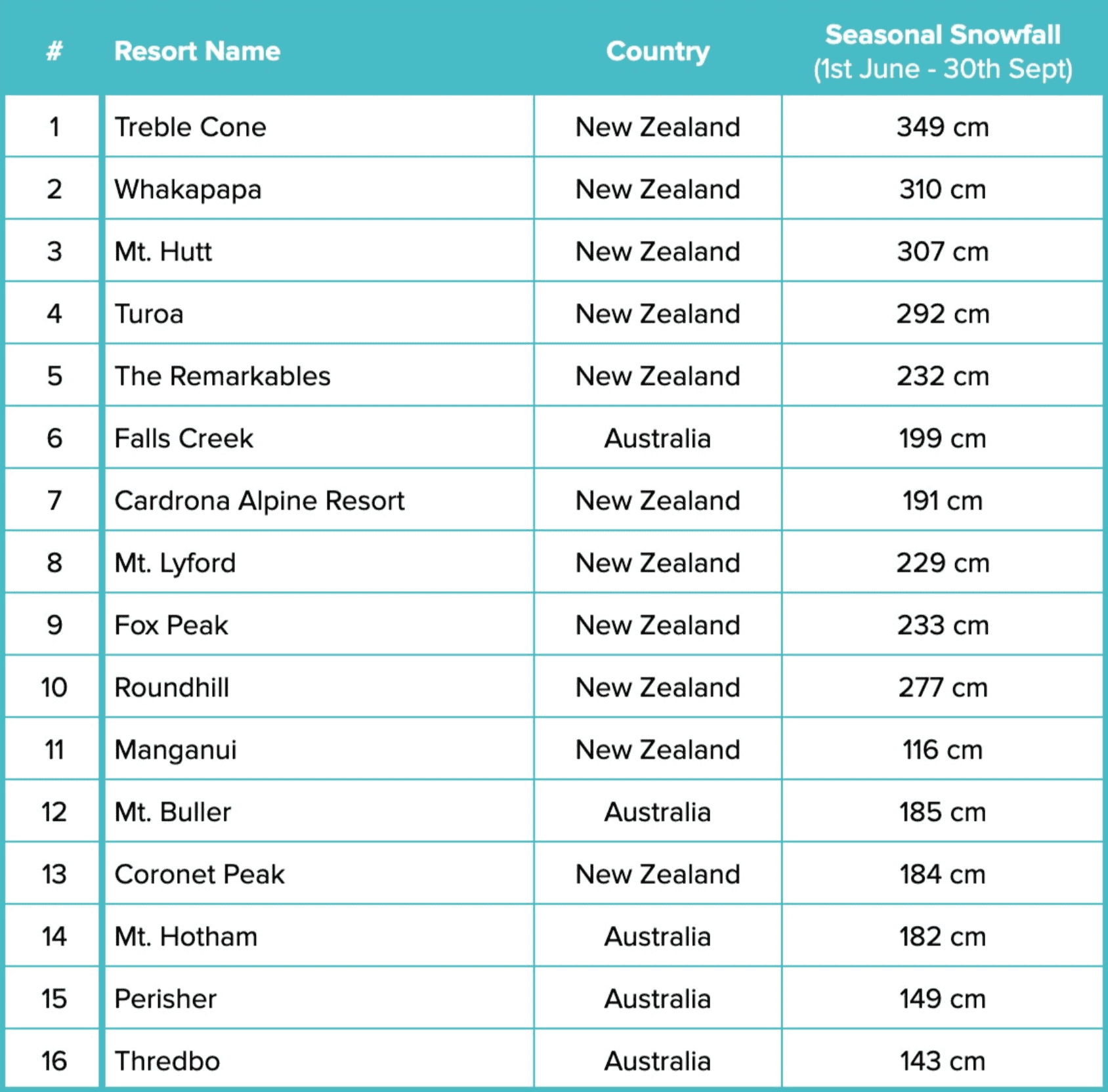
South America’s Top Resorts
The study found that some South American ski resorts will receive over three times as much snowfall as most Australian or New Zealand ski resorts. So for powder chasers, this will be an appealing destination.
Nevados de Chillan (Chile) resort was crowned the Southern Hemisphere’s snowiest resort with a huge 272″ (691 cm) historically over the winter months from June 1st through to September 30th.
Cerro Catedral, Argentina’s largest ski resort, came in second with 186″ (473 cm) of snowfall, closely followed by Valle Nevado in Chile.
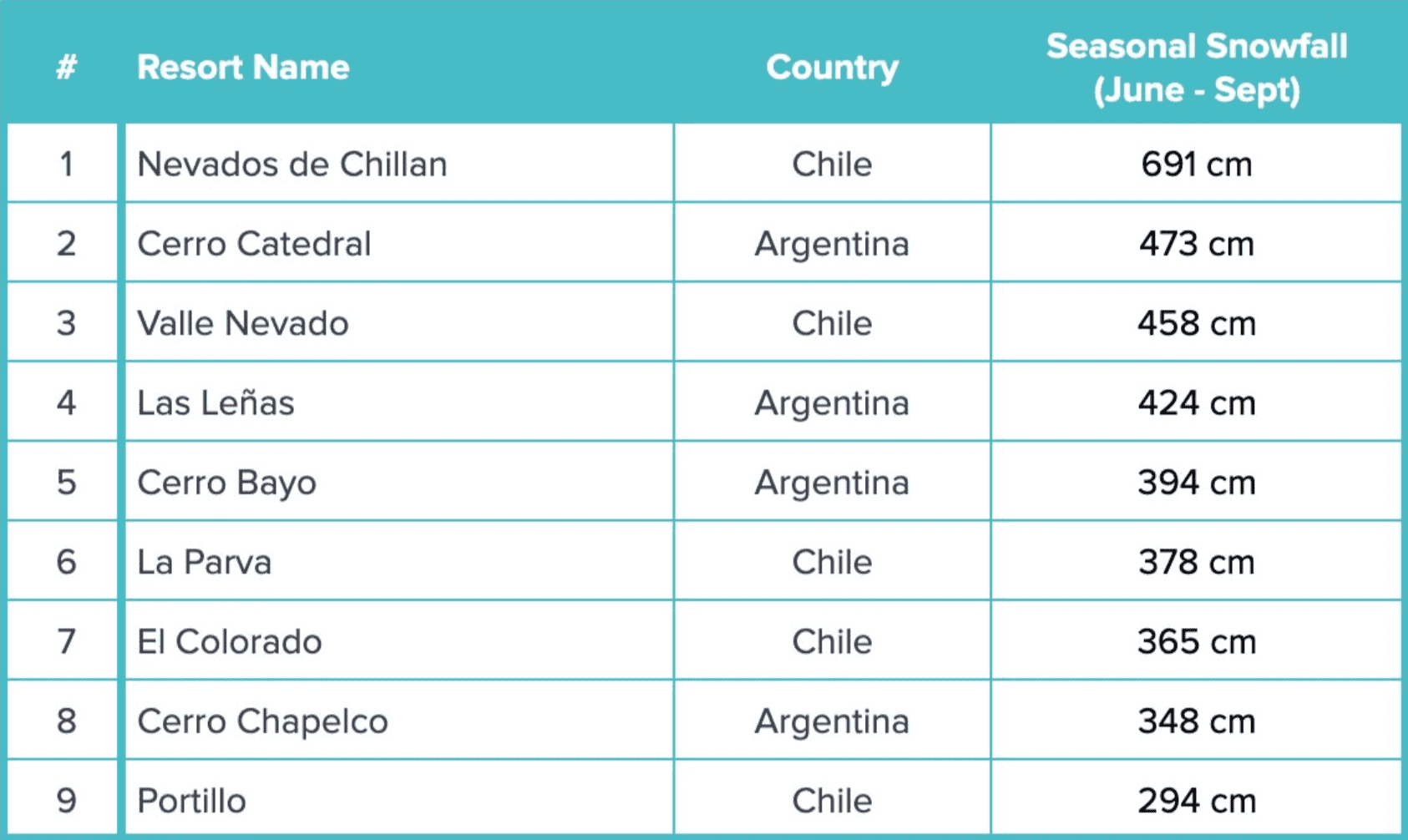
The Snowiest Weeks of the Season
The study also looked at which week of the season historically has been the best for high levels of snowfall at each resort and might be suitable for people seeking powder snow conditions.
As expected, this varied greatly by country but saw some similarities between resorts that are in close proximity to each other.
Nevados de Chillan (Chile) received, on average, 27″ (68cm) of snow in the fourth week of August, according to the data, making it not only the snowiest resort overall but the snowiest week of all the data looked at.
“As climate change continues to impact the snowsports industry, it is increasingly important for businesses and consumers to keep an eye on trends like these. While there are many factors that should be considered when planning a trip, snowfall is certainly something to look at. As climate trends change, advertised snowfall stats from resort websites can become outdated and not reflective of recent seasons. Therefore, unbiased sources like Snow Forecast are invaluable in providing insight.”
– Ed Raine, Director of Snow Season Central
See all the findings of the study on Snow Season Central, including a week-by-week snowfall breakdown of data for each resort.
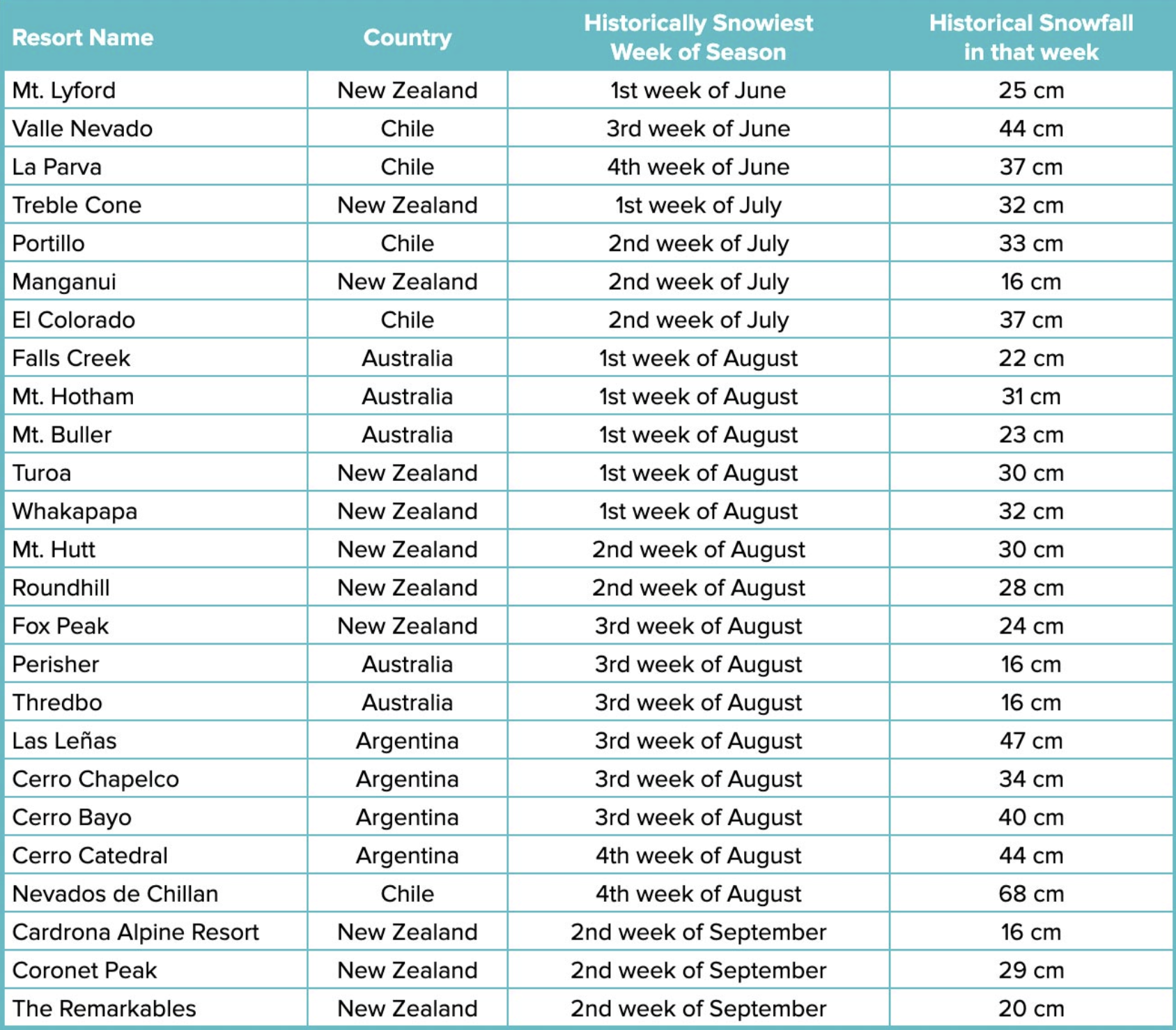
Methodology
The selection process for the ski resorts was based on a minimum ski slope terrain. For Australia and New Zealand, this was six miles (10 km), while it was increased to 22 miles (35 km) for Chile and Argentina due to larger resorts. This data was based on resort stats from skiresort.info.
Data was collected from Snow Forecast on the 27th of May 2023 and reflects the historical snowfall in each given week for data available. The data was collected based on mid-mountain altitude between 2007 and 2022 for each resort.
Historical weekly snowfall data between the selected dates (1st June – 30th September) was then added up to provide the total snowfall over the three months of winter (June, July, August) and the first month of spring (September).
Week-on-week snowfall
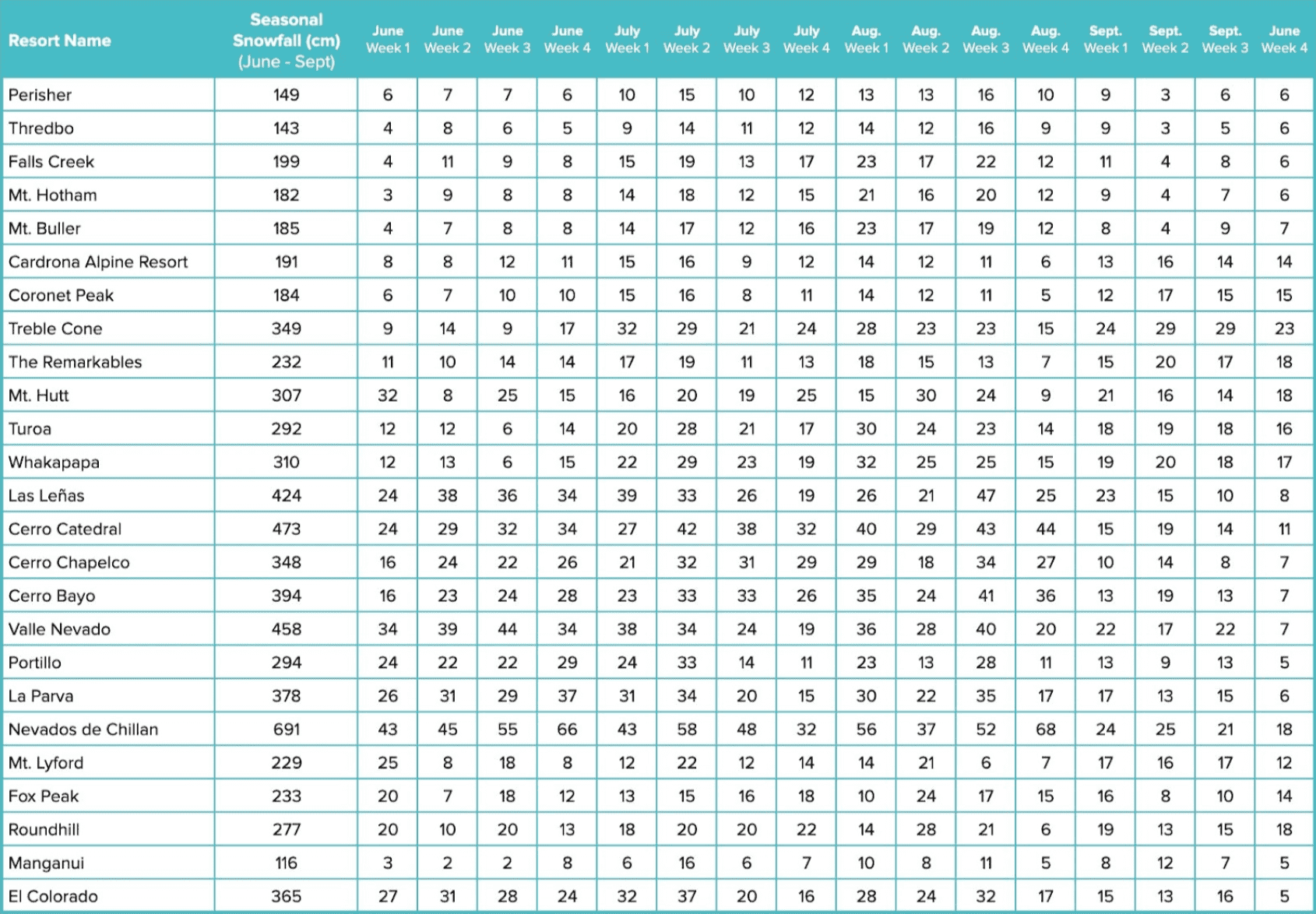
Can’t justify going away to ski in the summertime as a working person in the US with limited income and time off…but if I were free to do anything I wanted whenever I wanted I would.
Does anyone know why the snowiest areas in the southern hemisphere only get half or a third of what the snowiest areas in the northern hemisphere get?